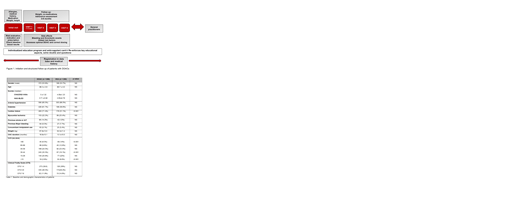BACKGROUND
Direct oral anticoagulants (DOAC) are increasingly used in patients with Non Valvular Atrial Fibrillation (NVAF) for stroke prevention. However, Follow-Up (FU) and dosing these agents in the elderly can be challenging due to different factors, such as chronic kidney disease, frailty, falls, multifactorial anemia and concomitant polypharmacy. These factors in elderly patients predisposes to both thromboembolic and bleeding events once atrial fibrillation occurs. Therefore, balancing risks and benefits of antithrombotic strategies in older populations is crucial. Despite recent increases in DOAC use in NVAF, there are still limited data regarding DOACs effectiveness and safety in frail elderly patients.
AIM
To assess the effectiveness and safety according to DOAC or Vitamin K Antagonist (VKA) in a cohort of elderly patients with NVAF.
METHODS
From April 2016 to April 2019, we consecutively included NVAF elderly patients (≥80 years-old) treated with DOAC or VKA in a prospective multicenter registry. Demographic, laboratory, frailty risk stratification and antithrombotic therapy data were collected. Patients had a minimum FU of 6 months.
VKA patients had a standard FU through digital international normalized ratio (INR) control and the efficacy of therapy was determined by the time in therapeutic range (TTR) values from the preceding 6 months of treatment using Rosendaal's method. FU in DOAC patients was performed through structured and integral assessment following the Tromboc@t Working Group recommendations for management in patients receiving DOAC (Olivera et al, Med Clin 2018). Key practical management aspects are listed in the flow chart (Figure 1).
Clinical Frailty Scale (CFS score) was assigned to each patient at the beginning and during the FU; patients were classified into three categories: non-frail (CFS 1-4), mild-to-moderately frail (CFS 5-6), and severely frail (CFS 7-9).
RESULTS
From a total of 1040 NVAF patients, 690 (63.5%) were treated with DOAC (61 dabigatran, 95 rivaroxaban, 254 edoxaban and 280 apixaban) and 350 with VKA. In the VKA group, the mean TTR was 52.8%. Demographic characteristics and CFS score are summarized in table 1.
Kaplan-Meier analysis (median FU: 16.5 months) showed a significantly high incidence of stroke/systemic embolism among VKA patients vs DOAC patients (4.2 vs 0.5 events per 100 patient-years, p<0.001). Major bleeding in the DOAC group was significantly infrequent compared with VKA group (2.2 vs 8.9 events, p=0.001). In the DOAC group, 90% (n=20/22) of the major bleedings were gastrointestinal [16 rivaroxaban and 4 edoxaban]. However, in the VKA group 64% (n = 20/31) were gastrointestinal, 25.8% (n= 8/31) intracranial and 9.7% (n = 3/31) urogenital bleedings.
We identified 365 very elderly patients (aged ≥ 90 years) of which 270 (39.1%) were DOAC patients and 95 (27.1%) VKA patients. In this subgroup of patients, after a multivariate regression analysis, the stroke/systemic embolism incidence was similar in both treatment groups regardless of the age, but major bleeding decreased significantly in DOAC group (adjusted HR 0.247, 95% CI 0.091-0.664).
CONCLUSIONS
Our data indicate that DOACs can be a good therapeutic option for stroke/systemic embolism prevention in frail elderly patients, showing low rates of stroke as well as bleeding events when a structured and integral FU is applied to anticoagulated patients. Further investigations are necessary to analyze the impact in the quality of life and net clinical benefit of anticoagulant therapy when a FU program is applied in elderly patients.
Sierra:Novartis: Honoraria, Research Funding, Speakers Bureau; Astellas: Honoraria; Pfizer: Honoraria; Daiichi-Sankyo: Honoraria, Speakers Bureau; Abbvie: Honoraria, Speakers Bureau; Roche: Honoraria; Jazz Pharmaceuticals: Honoraria.
Author notes
Asterisk with author names denotes non-ASH members.


This feature is available to Subscribers Only
Sign In or Create an Account Close Modal